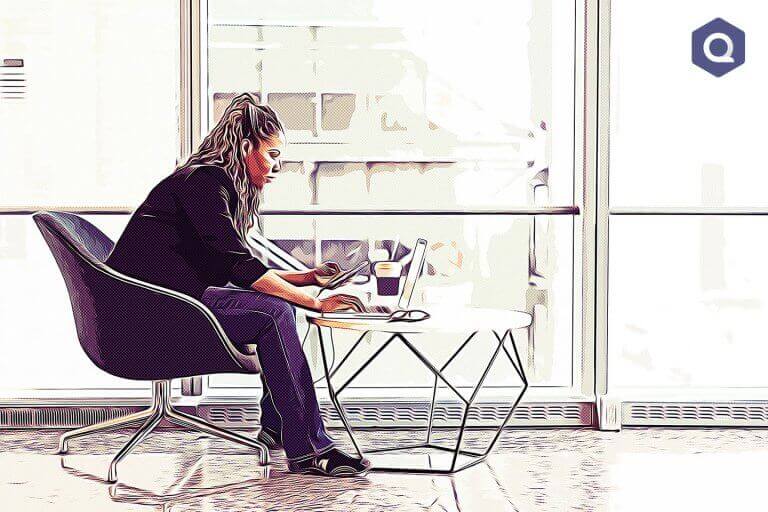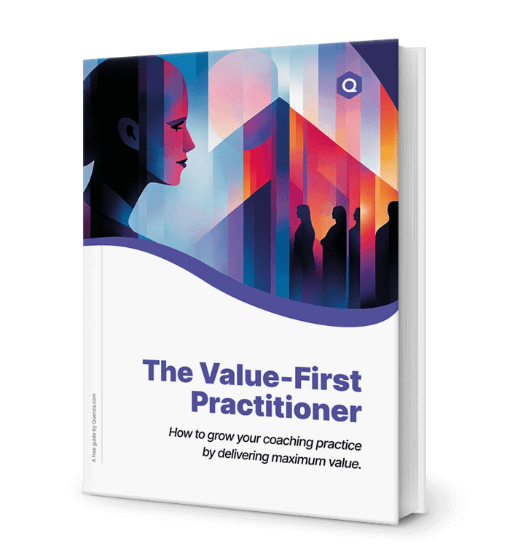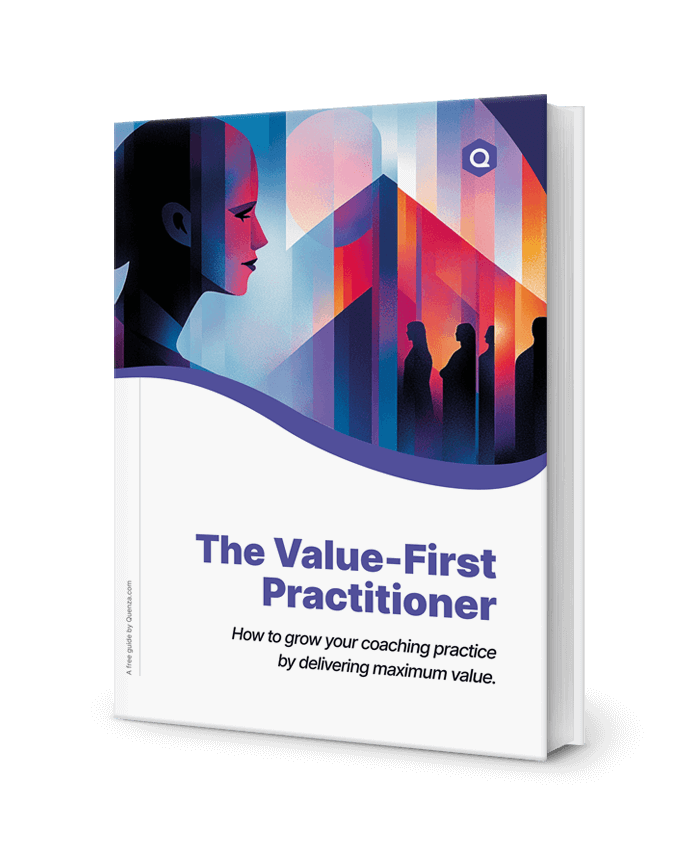Anxiety is a pervasive mental health concern affecting millions of people worldwide. In the United States alone, anxiety disorders impact approximately 40 million adults, making it the most common mental illness [1]. As individuals and healthcare professionals seek effective treatments, art therapy has emerged as a promising approach to managing anxiety symptoms.
Art therapy is a form of psychotherapy that uses creative expression as a means of healing and self-discovery. This innovative approach combines the therapeutic benefits of creating art with the insights of psychology to help individuals cope with various mental health challenges, including anxiety [2].
In this blog post, we’ll explore the concept of art therapy, its scientific basis for treating anxiety, and how it can be incorporated into your life as a powerful tool for managing stress and promoting mental well-being. Whether you’re struggling with anxiety yourself or seeking to understand alternative treatment options, this comprehensive guide will provide valuable insights into the world of art therapy and its potential to transform lives.
What is Art Therapy?
Art therapy is a specialized form of psychotherapy that harnesses the power of creative expression to promote healing, self-awareness, and personal growth. It involves the use of various artistic mediums, such as drawing, painting, sculpture, and collage, as tools for communication and self-exploration under the guidance of a trained art therapist [3].
The roots of art therapy can be traced back to the mid-20th century when psychiatrists and artists began to recognize the therapeutic potential of artistic expression. Pioneers like Margaret Naumburg and Edith Kramer laid the foundation for what would become a distinct profession, combining elements of psychoanalysis with the expressive qualities of art-making [4].
Unlike traditional talk therapy, art therapy provides a non-verbal avenue for exploring emotions, thoughts, and experiences. This can be particularly beneficial for individuals who struggle to articulate their feelings or who find verbal communication challenging. Through the process of creating art, clients can externalize their internal experiences, gaining new perspectives and insights into their mental states.
Art therapy is not about artistic skill or creating aesthetically pleasing works. Instead, it focuses on the process of creation and the meanings that emerge from it. Art therapists are trained to guide clients through this process, helping them interpret their artwork and connect it to their personal experiences and challenges.
In the context of anxiety treatment, art therapy offers a unique approach to managing symptoms and developing coping strategies. By engaging in creative activities, individuals with anxiety can experience a sense of flow and mindfulness, temporarily alleviating worries and promoting relaxation. Moreover, the artwork produced can serve as a tangible representation of one’s emotional state, facilitating discussions about anxiety triggers and potential solutions.
The Science Behind Art Therapy for Anxiety
The effectiveness of art therapy in treating anxiety is supported by a growing body of scientific research. Neurological studies have shown that engaging in creative activities can have profound effects on the brain, influencing areas associated with stress response, emotional regulation, and cognitive function [5].
When individuals participate in art therapy, the act of creating art stimulates the release of dopamine, a neurotransmitter associated with pleasure and reward. This natural “feel-good” chemical can help counteract the negative emotions often experienced during anxiety episodes. Additionally, the focused attention required for art-making can activate the prefrontal cortex, potentially improving executive function and decision-making skills that are sometimes impaired by anxiety.
Several studies have demonstrated the efficacy of art therapy in reducing anxiety symptoms. A randomized controlled trial published in the Journal of the American Art Therapy Association found that participants who engaged in art therapy sessions experienced significant reductions in anxiety levels compared to a control group [6]. The researchers observed that the creative process provided a sense of control and self-efficacy, which are often diminished in individuals struggling with anxiety.
Moreover, art therapy has been shown to be particularly effective in treating anxiety related to specific conditions or situations. For instance, a study focusing on cancer patients found that art therapy interventions significantly reduced anxiety and improved overall quality of life during treatment [7].
The scientific evidence supporting art therapy for anxiety continues to grow, with researchers exploring its potential in various clinical settings and populations. As our understanding of the neurobiological mechanisms underlying art therapy expands, it is likely to become an increasingly recognized and utilized treatment option for anxiety disorders.
| Brain Region | Function | Impact of Art Therapy |
|---|---|---|
| Prefrontal Cortex | Executive function and decision-making | Enhanced cognitive control over anxious thoughts |
| Amygdala | Emotional processing and fear response | Reduced hyperactivity, leading to decreased anxiety |
| Hippocampus | Memory formation and spatial navigation | Improved contextualization of anxiety-provoking memories |
| Insula | Interoception and emotional awareness | Better recognition and regulation of bodily anxiety symptoms |
Types of Art Therapy Techniques for Anxiety
Art therapy encompasses a wide range of techniques and approaches, each offering unique benefits for individuals struggling with anxiety. Here are some of the most effective art therapy techniques used to address anxiety symptoms:
1. Drawing and Painting:
These fundamental art forms provide a direct means of visual expression. For anxiety management, free-form drawing or painting can help externalize worries and fears. Techniques like mandala creation or abstract expressionism allow individuals to explore their emotions without the pressure of representational accuracy [8].
2. Sculpting and Pottery:
Working with three-dimensional materials like clay or plasticine can be particularly grounding for those experiencing anxiety. The tactile nature of these mediums provides a sensory focus, helping to redirect attention away from anxious thoughts. The process of molding and shaping can also serve as a metaphor for transforming one’s emotional state.
3. Collage-making:
This technique involves creating compositions from pre-existing images and materials. For individuals with anxiety, collage-making can be less intimidating than starting with a blank canvas. It allows for the exploration of complex emotions through symbolic imagery and can help in identifying and organizing thoughts related to anxiety triggers.
4. Digital Art Creation:
With the advent of technology, digital art has become an accessible and versatile medium for art therapy. Applications and software designed for digital drawing, painting, and photo manipulation offer a wide range of creative possibilities. This medium can be particularly appealing to younger clients or those more comfortable with technology.
5. Art Journaling:
Combining visual art with written expression, art journaling provides a structured yet flexible approach to processing anxiety. Individuals can use mixed media to create personal visual diaries, documenting their emotional journeys and coping strategies over time.
6. Mindfulness-Based Art Therapy:
This approach integrates mindfulness practices with art-making. Techniques such as zentangle drawing or slow, deliberate painting can induce a meditative state, helping to calm anxious thoughts and promote present-moment awareness [9].
Each of these techniques can be tailored to individual preferences and needs, allowing for a personalized approach to anxiety management through art therapy. The choice of technique often depends on the client’s comfort level, the specific nature of their anxiety, and the therapeutic goals established with their art therapist.
| Technique | Description | Benefits for Anxiety |
|---|---|---|
| Mandala Drawing | Creating circular designs with repeating patterns | Promotes relaxation and mindfulness |
| Emotion Color Wheel | Assigning colors to different emotions and creating a visual representation | Aids in emotional identification and expression |
| Worry Sculpture | Molding clay to represent anxieties or worries | Externalizes fears and promotes a sense of control |
| Visual Journaling | Combining artwork with written reflections | Facilitates self-expression and tracks anxiety patterns |
Benefits of Art Therapy for Anxiety Management
Art therapy offers a multitude of benefits for individuals struggling with anxiety. These advantages extend beyond symptom reduction, encompassing improvements in overall mental health and quality of life. Here are some key benefits:
1. Stress Reduction:
Engaging in creative activities has been shown to significantly lower cortisol levels, the primary stress hormone in the body [10]. This physiological change can lead to a sense of relaxation and calmness, counteracting the heightened arousal often associated with anxiety.
2. Improved Self-Expression:
Art therapy provides a non-verbal outlet for expressing complex emotions that may be difficult to articulate verbally. This can be particularly beneficial for individuals who struggle with verbalizing their anxiety or who have experienced trauma [11].
3. Enhanced Self-Awareness:
Through the process of creating and reflecting on artwork, individuals can gain deeper insights into their thought patterns, emotions, and behaviors related to anxiety. This increased self-awareness can be a crucial step in developing effective coping strategies.
4. Boosted Self-Esteem:
Completing art projects and expressing oneself creatively can foster a sense of accomplishment and self-efficacy. Research has shown that participation in art therapy can lead to improvements in self-esteem and self-worth, which are often compromised in individuals with anxiety disorders [12].
5. Mindfulness and Present-Moment Focus:
The act of creating art naturally encourages a state of mindfulness, where attention is focused on the present moment. This can help break the cycle of rumination and worry that characterizes many anxiety disorders.
6. Social Connection:
Group art therapy sessions can provide a sense of community and shared experience, reducing feelings of isolation often associated with anxiety. The collaborative nature of some art therapy activities can also improve social skills and foster supportive relationships.
By offering these diverse benefits, art therapy provides a holistic approach to anxiety management that addresses both the symptoms and underlying causes of anxiety disorders.
How to Get Started with Art Therapy
Embarking on an art therapy journey can be an exciting and transformative experience for individuals seeking to manage their anxiety. Here are some steps to help you get started:
1. Find a Qualified Art Therapist:
Look for a licensed art therapist with experience in treating anxiety disorders. You can search for certified professionals through organizations like the American Art Therapy Association or the International Art Therapy Organization. Ensure that the therapist has proper credentials and is registered with relevant professional bodies.
2. Prepare for Your First Session:
Before your first appointment, reflect on your goals for therapy and any specific anxiety-related concerns you’d like to address. Be open to trying new art materials and techniques, even if you don’t consider yourself artistic.
3. Explore Different Art Materials:
Art therapy can involve a wide range of materials, from traditional drawing and painting supplies to digital art tools. Experiment with various mediums to find what resonates with you and feels most comfortable for expressing your emotions.
4. Start with Simple Exercises:
Begin with basic art therapy exercises designed for anxiety relief. These might include: – Creating a visual representation of your anxiety – Drawing or painting your safe place – Making a collage of coping strategies
5. Practice Regularly:
Consistency is key in art therapy. Set aside time for regular art-making, even outside of therapy sessions. This can help reinforce the benefits and provide ongoing anxiety management tools [13].
6. Be Patient and Non-Judgmental:
Remember that art therapy is about the process, not the product. Avoid self-criticism and focus on expressing yourself authentically. Progress may be gradual, so be patient with yourself as you explore this new approach to managing anxiety.
7. Consider Combining with Other Therapies:
Art therapy can be highly effective when used in conjunction with other treatment modalities, such as cognitive-behavioral therapy (CBT) or medication. Discuss the possibility of an integrated approach with your healthcare providers [14].
By following these steps, you can begin to harness the power of art therapy as a tool for managing your anxiety and improving your overall well-being.
Incorporating Art Therapy into Your Daily Routine
Integrating art therapy techniques into your daily life can provide ongoing support for anxiety management. Here are some ways to make art therapy a regular part of your routine:
1. Create a Dedicated Art Space:
Designate a specific area in your home for art-making. This can be as simple as a corner of a room with a small table and art supplies. Having a dedicated space can make it easier to engage in regular art practice.
2. Set Aside Time for Daily Art-Making:
Allocate at least 15-30 minutes each day for creative expression. This could be in the morning to set a positive tone for the day, or in the evening to unwind and process the day’s events.
3. Keep an Art Journal:
Use a sketchbook or journal to combine visual art with written reflections. This can serve as a visual diary of your emotional journey and provide insights into your anxiety patterns over time [15].
4. Use Art for Mindfulness Breaks:
Incorporate short art activities into your workday as mindfulness breaks. Simple exercises like doodling or coloring can help reset your focus and reduce anxiety.
5. Explore Digital Art Apps:
Utilize smartphone or tablet apps designed for art therapy and relaxation. These can be particularly useful for on-the-go anxiety management.
6. Create an Art Therapy Toolkit:
Assemble a portable kit with basic art supplies (e.g., colored pencils, a small sketchpad, modeling clay) that you can carry with you for impromptu art-making sessions.
7. Join Online Art Communities:
Engage with online art therapy groups or communities. Sharing your work and experiences with others can provide additional support and motivation.
8. Practice Responsive Art-Making:
When you feel anxiety rising, turn to art as a coping mechanism. Create a visual representation of your feelings or engage in a calming art activity to help manage the symptoms in real-time.
By incorporating these practices into your daily routine, you can harness the therapeutic benefits of art-making on an ongoing basis, providing yourself with powerful tools for managing anxiety and promoting overall mental well-being.
Combining Art Therapy with Other Anxiety Treatments
While art therapy can be highly effective on its own, combining it with other treatment modalities often yields the most comprehensive approach to anxiety management. Here’s how art therapy can be integrated with other treatments:
1. Cognitive-Behavioral Therapy (CBT):
Art therapy can complement CBT by providing a visual component to cognitive restructuring exercises. For example, creating artwork that represents negative thought patterns and then visually transforming them can reinforce CBT techniques [16].
2. Mindfulness-Based Therapies:
Art-making naturally lends itself to mindfulness practices. Combining art therapy with mindfulness-based stress reduction (MBSR) or mindfulness-based cognitive therapy (MBCT) can enhance present-moment awareness and emotional regulation.
3. Medication:
For individuals using anti-anxiety medications, art therapy can provide additional symptom relief and coping strategies. It’s important to discuss the integration of art therapy with your prescribing physician to ensure a coordinated approach.
4. Exposure Therapy:
In treating specific phobias or social anxiety, art therapy can be used as a preparatory tool for exposure exercises. Creating artwork that depicts anxiety-provoking situations can help individuals process their fears before actual exposure.
5. Group Therapy:
Participating in group art therapy sessions can complement individual therapy by providing peer support and opportunities for social interaction, which are often challenging for those with anxiety disorders.
6. Body-Based Therapies:
Combining art therapy with somatic experiencing or other body-based approaches can help individuals connect their physical sensations of anxiety with visual expression, promoting a more holistic understanding of their experience [17].
7. Digital Health Interventions:
Integrating art therapy with digital mental health apps or online therapy platforms can provide a multi-faceted approach to anxiety management, offering support between in-person sessions.
When considering combining art therapy with other treatments, it’s crucial to work with a qualified mental health professional who can help create an integrated treatment plan tailored to your specific needs and goals. This collaborative approach can maximize the benefits of each therapeutic modality and provide a comprehensive strategy for managing anxiety.
Conclusion
Art therapy offers a unique and powerful approach to managing anxiety, providing individuals with creative tools for self-expression, emotional regulation, and personal growth. Through the process of art-making and reflection, those struggling with anxiety can gain valuable insights into their emotions, develop new coping strategies, and experience the calming effects of creative engagement.
The scientific evidence supporting the efficacy of art therapy for anxiety continues to grow, with research demonstrating its positive impacts on stress reduction, self-esteem, and overall mental well-being. By incorporating art therapy techniques into daily life and combining them with other evidence-based treatments, individuals can develop a comprehensive toolkit for managing their anxiety symptoms.
Whether you’re seeking professional art therapy sessions or looking to explore art-making as a self-help strategy, the journey of creative expression offers a path toward greater self-understanding and emotional balance. As you embark on this journey, remember that the goal is not to create masterpieces, but to engage in a process of self-discovery and healing.
In a world where anxiety has become increasingly prevalent, art therapy stands out as a holistic, accessible, and empowering approach to mental health care. By tapping into your innate creativity, you can unlock new ways of coping with anxiety and cultivating resilience in the face of life’s challenges.
We encourage you to explore the world of art therapy, whether through professional guidance or personal practice. Your journey toward anxiety management and improved mental health may just be a brushstroke, a sketch, or a sculpture away.
Frequently Asked Questions
While creating art as a hobby can be relaxing and enjoyable, art therapy is a structured, therapeutic approach guided by a trained professional. Art therapy focuses on the process of creation and its psychological implications, rather than the aesthetic outcome. It involves specific techniques and exercises designed to address mental health concerns, particularly anxiety in this context. The art therapist helps interpret the artwork and facilitates discussions to gain insights into the client’s emotional state and thought patterns, which is not typically part of casual art-making.
Absolutely. Art therapy is not about creating masterpieces or having any particular artistic skill. The focus is on the process of creation and self-expression, not the final product. Art therapists are trained to work with individuals of all skill levels and can provide guidance on using various art materials. The goal is to use art as a means of communication and exploration, which doesn’t require artistic talent. Many people find that engaging in art therapy actually helps them discover creative abilities they didn’t know they had.
The timeline for seeing results can vary greatly depending on the individual, the severity of their anxiety, and their engagement with the therapy process. Some people may experience immediate relief during art-making sessions, while for others, it may take several weeks or months to notice significant changes. It’s important to approach art therapy as an ongoing process rather than a quick fix. Consistent participation and integration of art therapy techniques into daily life can lead to more sustainable long-term benefits in managing anxiety.
While art therapy is generally considered safe and beneficial, there are a few considerations to keep in mind. Some individuals might initially feel uncomfortable or self-conscious about creating art, especially in a group setting. There’s also a possibility that exploring emotions through art could temporarily increase anxiety as suppressed feelings surface. However, a skilled art therapist will guide the process to ensure it remains therapeutic and manageable. Additionally, art therapy should not be seen as a replacement for other necessary treatments, such as medication for severe anxiety disorders, but rather as a complementary approach.
Technology offers exciting possibilities for integrating art therapy into daily anxiety management. Digital art apps and software can provide a portable and accessible means of creating art, allowing for spontaneous expression when anxiety arises. Virtual reality (VR) platforms are being explored for immersive art therapy experiences, potentially beneficial for those with severe anxiety or mobility issues. Teletherapy options also make it possible to engage in art therapy sessions remotely. However, it’s important to balance digital tools with traditional art-making methods, as the tactile experience of physical art materials can offer unique sensory benefits for anxiety reduction.
References
- ^ Anxiety and Depression Association of America. (2021). Facts & Statistics. https://adaa.org/understanding-anxiety/facts-statistics
- ^ American Art Therapy Association. (2017). About Art Therapy. https://arttherapy.org/about-art-therapy/
- ^ Malchiodi, C. A. (2012). Handbook of Art Therapy. Guilford Press.
- ^ Junge, M. B. (2010). The Modern History of Art Therapy in the United States. Charles C Thomas Publisher.
- ^ Bolwerk, A., Mack-Andrick, J., Lang, F. R., Dörfler, A., & Maihöfner, C. (2014). How art changes your brain: Differential effects of visual art production and cognitive art evaluation on functional brain connectivity. PLOS ONE, 9(7), e101035. https://doi.org/10.1371/journal.pone.0101035
- ^ Sandmire, D. A., Gorham, S. R., Rankin, N. E., & Grimm, D. R. (2012). The influence of art making on anxiety: A pilot study. Art Therapy, 29(2), 68-73. https://doi.org/10.1080/07421656.2012.683748
- ^ Geue, K., Goetze, H., Buttstaedt, M., Kleinert, E., Richter, D., & Singer, S. (2010). An overview of art therapy interventions for cancer patients and the results of research. Complementary Therapies in Medicine, 18(3-4), 160-170. https://doi.org/10.1016/j.ctim.2010.04.001
- ^ Curry, N. A., & Kasser, T. (2005). Can coloring mandalas reduce anxiety? Art Therapy, 22(2), 81-85. https://doi.org/10.1080/07421656.2005.10129441
- ^ Monti, D. A., Peterson, C., Kunkel, E. J. S., Hauck, W. W., Pequignot, E., Rhodes, L., & Brainard, G. C. (2006). A randomized, controlled trial of mindfulness-based art therapy (MBAT) for women with cancer. Psycho-Oncology, 15(5), 363-373. https://doi.org/10.1002/pon.988
- ^ Kaimal, G., Ray, K., & Muniz, J. (2016). Reduction of cortisol levels and participants' responses following art making. Art Therapy, 33(2), 74-80. https://doi.org/10.1080/07421656.2016.1166832
- ^ Van der Kolk, B. A. (2014). The body keeps the score: Brain, mind, and body in the healing of trauma. Viking.
- ^ Spiegel, D., Malchiodi, C., Backos, A., & Collie, K. (2006). Art therapy for combat-related PTSD: Recommendations for research and practice. Art Therapy, 23(4), 157-164. https://doi.org/10.1080/07421656.2006.10129335
- ^ Camic, P. M. (2008). Playing in the mud: Health psychology, the arts and creative approaches to health care. Journal of Health Psychology, 13(2), 287-298. https://doi.org/10.1177/1359105307086698
- ^ Abbing, A., Ponstein, A., van Hooren, S., de Sonneville, L., Swaab, H., & Baars, E. (2018). The effectiveness of art therapy for anxiety in adults: A systematic review of randomised and non-randomised controlled trials. PLOS ONE, 13(12), e0208716. https://doi.org/10.1371/journal.pone.0208716
- ^ Mercer, A., Warson, E., & Zhao, J. (2010). Visual journaling: An intervention to influence stress, anxiety and affect levels in medical students. The Arts in Psychotherapy, 37(2), 143-148. https://doi.org/10.1016/j.aip.2009.12.003
- ^ Sarid, O., & Huss, E. (2010). Trauma and acute stress disorder: A comparison between cognitive behavioral intervention and art therapy. The Arts in Psychotherapy, 37(1), 8-12. https://doi.org/10.1016/j.aip.2009.11.004
- ^ Malchiodi, C. A. (2020). Trauma and expressive arts therapy: Brain, body, and imagination in the healing process. Guilford Publications.



